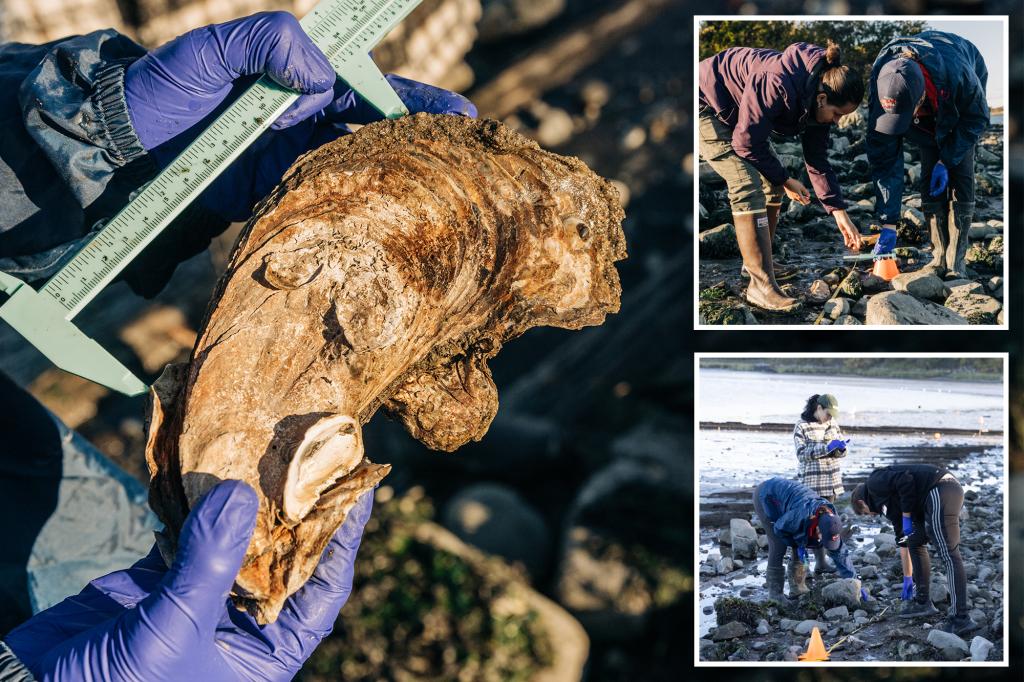Queens is positioning itself as a new hotspot for oysters, with a shoreline in the borough identified as an ideal location for mollusks to thrive once again. A recent survey conducted in Powell’s Cove Park by volunteers revealed around 700 oysters living in the area. The Billion Oyster Project (BOP) is spearheading efforts to restore oyster populations in the city, with the goal of installing artificial oyster reefs to support more habitat and biodiversity in the area. The project marks a significant step in revitalizing the oyster population in New York City, which was once abundant but declined due to pollution and overharvesting in the 20th century.
The ongoing Wild Oyster Survey conducted by BOP in College Point aims to assess the oyster population in the area and determine the feasibility of planting artificial reefs to further bolster their numbers. Volunteers are meticulously counting oysters, measuring their length, and recording their locations to gather data for the project. The success of the survey in identifying a growing population of oysters in the area bodes well for potential reef restoration efforts. Despite the positive findings, New Yorkers are not allowed to consume oysters or other shellfish due to sewage contamination in the city’s waters, which has been a major contributing factor to the decline in oyster populations over the years.
BOP has already installed over 140 million oysters at restoration sites across the five boroughs, including under the Brooklyn Bridge and on Governor’s Island. The group’s efforts focus on restoring oyster reefs to help maintain clean water in New York’s waterways. Oysters are known for their ability to filter large volumes of water daily, making them crucial for water quality. The installation of artificial reefs not only benefits oysters but also provides a habitat for various marine species, including spotted hake, eels, blue crabs, and dolphins. The success of these restoration projects underscores the importance of protecting oyster populations and their habitats in urban environments.
The collaborative efforts of organizations like BOP and the Coastal Preservation Network have helped shed light on the potential of oyster populations in New York City. The survey conducted in College Point revealed a significant number of oysters, indicating the area’s suitability for further restoration projects. Through hands-on experiences like the survey, locals have the opportunity to learn about and engage with their marine environment, fostering a sense of stewardship and appreciation for these vulnerable ecosystems. By identifying areas where oysters thrive, conservationists can strategically plan future restoration efforts to support oyster populations and enhance biodiversity in urban waters.
The restoration project in College Point holds promise for future initiatives aimed at enhancing oyster populations and reef ecosystems in the area. BOP is considering the installation of “reef balls,” concrete molds that mimic natural reefs and provide a suitable environment for oysters to grow and reproduce. The implementation of artificial reefs not only benefits oysters but also supports a diverse range of marine life, creating sustainable habitats in urban waters. The project’s success demonstrates the positive impact of reef restoration efforts on local ecosystems and the broader environment, highlighting the importance of protecting and conserving oyster populations to maintain healthy waterways in New York City.















